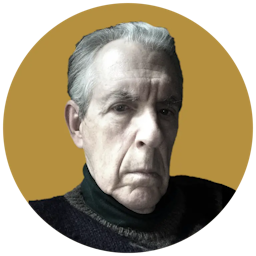When Even ‘Life From Both Sides’ Is Not Enough
What gender transition meant for James/Jan Morris’s writing is more than Paul Clements can quite bring himself to say. He prefers to maintain a neutrality that makes this less than a penetrating biography.

‘Jan Morris: Life From Both Sides: A Biography’
By Paul Clements
Scribe Publications, 608 pages
In 1960, James Morris published a classic, “Venice,” the first of what would become enough travel books to fill a small bookcase. I realized this when I entered the downstairs entrance to the home of an inveterate traveler to Venice, Michael Foot, the British journalist and statesman. For years, he spent his holidays with Morris’s books in hand.
A journalist and colleague of Morris’s, Geoffrey Moorhouse, called “Venice” a “perfect book”: “The trick that he pulled off so memorably was to combine a sense of history … with a deep and mellow feeling for the peculiarities and nuances of a place and its people, all conveyed with a singular flair for imaginative description: this is, do not doubt it, one of the great prose stylists of the past hundred years.”
Morris began in the mid-1950s as a Middle East correspondent, reporting on the Suez crisis, South African apartheid, the Algerian war of independence — all before “Venice.” He had also served in the military and fathered five children with his wife, Elizabeth Yet something was not quite right: Morris did not feel quite like a man. In fact, he felt suicidal.
In 1966, as documented by Paul Clements in his detailed chronology, Morris began “preparing physically and psychologically for gender confirmation surgery,” which he underwent in 1972. Two years later, Jan Morris published “Conundrum,” which the biographer calls a “landmark memoir of gender transition.”
What this gender transition meant for Morris’s writing is more than Mr. Clements can quite bring himself to say. He prefers to maintain a neutrality that makes this less than a penetrating biography. The biographer lets other commentators have their say, and then gets out of the way.
So Mr. Clements quotes a New York Times reviewer, Anatole Broyard, who chides Morris: “When she talks about male chauvinism … she is inconsistent in claiming to see it from both the male and female sides, since, by her own admission, she never felt like a man.”
What piffle. Morris’s early years as a man were certainly enough to know what men, among themselves, said and thought about women.
Then Mr. Clements swings around to Susan Sontag saying an article about Venice that Morris published in the June 1978 issue of Encounter was “so clearly an account written by a woman.” As evidence, Sontag cites Morris’s pleasure in writing about children more than any father would.” Well, maybe, but let’s hear from the fathers excluded from Sontag’s certainty about motherhood and fatherhood.
Should a biographer just let conflicting comments stand without an assessment of their worth, without articulating his own understanding of what that gender transition meant to all those books written after 1974? Too often, I feel like I’m just being taken on a tour of the evidence Mr. Clements has collated.
There is an old-fashioned word for the kind of book Mr. Clements has produced: chronicle. I don’t invoke the term to deride it. For some readers, the chronicle format may actually be preferable, and anything a biographer might say by way of analysis would seem simply intrusive and supererogatory.
Or maybe Morris is just too good of a writer for a biographer to compete with, and Morris’s own words should be enough? But then, why this biography?
Here is the subject on herself: “If you compare with a compassionate eye … a book like ‘Sydney’ (1992) with a book like ‘Oxford’ (1965), then I believe you would think, if you are intelligent enough, that there was a different person writing. You might not think the style had changed enormously, but I think you’d find the mind behind it, or the feeling behind it, the sensibility behind it, had changed.”
“If you are intelligent enough”: That is a goad to the critic and to the biographer as well. Writers like Morris expect us to read and to see at her high level, and it is the job of the biographer, I believe, to explore that high level and attempt — whatever the risks — to build upon it, and then some.
Mr. Rollyson is the author of “Reading Biography” and a biographer of Susan Sontag and Michael Foot.

